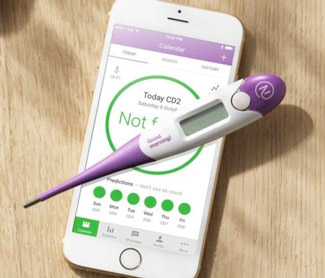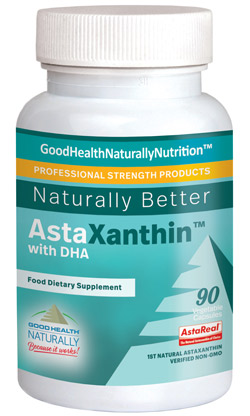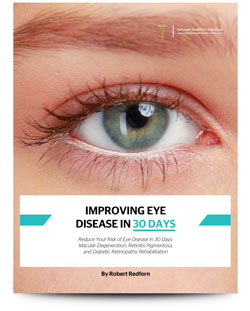Health News (Week 32 – 2017)
By Robert Redfern
You already know I am passionate about health but to be clear I am even more passionate about children and especially babies. It has been a special thrill to get feedback from happy mothers who beat the doctor’s failed results by following my fertility book. Today’s newsletter is a little different as it lays out an article with the help of the health writer, Bethany Ramos, who helped me take a sensitive subject and give it extra clarity.
Making Healthy Babies
The pill has been the most popular form of birth control for women since it was approved for contraceptive use in 1960. [1] When first developed in 1957, the FDA in the U.S. approved the birth control pill exclusively to treat menstrual disorders. By the early 1960s, millions of women in Western countries were on the pill. And that’s where the controversy began
Throwing out the baby with the bathwater
Planned Parenthood was one of the first organisations to receive criticism for dispensing the birth control pill. African-American activists asserted that the non-profit was using the pill to commit genocide in minority neighbourhoods.1 Soon after, Pope Paul VI officially opposed the pill on behalf of the Catholic church. And in 1969, author and activist Barbara Seaman published her book The Doctor’s Case Against the Pill, detailing its dangerous side effects that included depression, weight gain, loss of libido, blood clots, heart attack, and stroke. [2]
The latest research shows that Seamen’s assertions hold water. In 2014, the American Association for Cancer Research discovered that women who use high-dose oestrogen birth control pills and some other formulations have an increased breast cancer risk. [3] A 2015 MedLink Neurology report confirmed that birth control pill stroke risk is small but significant – endangering the more than 100 million women worldwide who currently use or have used oral contraceptives. [4] Hormonal birth control pills may also increase risk of seizures in women with epilepsy, an Epilepsy Research study stated in 2016. [5]
Other reported side effects of the pill, many of which are backed by research, include nausea, breast tenderness, bloating, headaches, increased appetite, yeast infections, mood swings, some mental health issues, and brown spots known as melasma on the face.
It’s no wonder women are foregoing oral contraceptives, or at least looking for substitutions, by the thousands. A pill that once brought women reproductive freedom has become more a curse than a blessing as its many side effects are uncovered. But for the majority of women of reproductive age, it isn’t prudent – or possible – to give up birth control altogether. More safe, effective, and natural alternatives, women say, are desperately needed.
Natural birth control? There’s an app for that
 In 2014, Elina Berglund Scherwitzl, a Swedish physicist, experienced the problem so many women face and identified the need for a solution. As a nuclear physicist, Scherwitzl discerned right away that the age-old rhythm method – a natural family planning technique used to track a woman’s cycle in order to abstain from sex during ovulation – wasn’t fail-safe enough with its estimated 76 percent efficacy rate. [6]
In 2014, Elina Berglund Scherwitzl, a Swedish physicist, experienced the problem so many women face and identified the need for a solution. As a nuclear physicist, Scherwitzl discerned right away that the age-old rhythm method – a natural family planning technique used to track a woman’s cycle in order to abstain from sex during ovulation – wasn’t fail-safe enough with its estimated 76 percent efficacy rate. [6]
Using data analysis and advanced mathematics, Scherwitzl came up with her own method. She created a precise algorithm that could be used to pinpoint ovulation, similar to the rhythm method but with a much higher degree of accuracy.
Scherwitzl launched the Natural Cycles app to help women closely monitor their cycles to avoid conception, where needed, by tracking their temperature. After completing several medical trials, Scherwitzl’s app became the first technological device ever to be officially certified for contraceptive use in 2017. The app is confirmed as effective as the pill, without the side effects. [7]
The new Natural Cycles app and the decades-old contraceptive pill are said to be more than 99 percent successful, if used correctly. Other forms of hormonal birth control also reach a 99 percent success rate but may bring similar side effects to the hormonal pill along with them: contraceptive injections, implants, IUDs, patches, and vaginal rings, for example. [8] Compare these to non-hormonal methods of birth control like male and female condoms at 98 percent and 95 percent effective, respectively. The female sponge, while hormone-free, can be messy and uncomfortable and may have an efficacy rate as low as 60 percent. [6]
For women’s health, natural is better
There’s no doubt women of reproductive age need easy access to healthcare and contraceptives. A woman may have to make critical choices about her reproductive health for more than 30 years. Using a natural birth control method, like Scherwitzl’s app, can protect a woman’s body and reproductive organs from unwanted side effects. Likewise, addressing nutritional needs can help to improve a woman’s health to support her during her cycles and pregnancies.
Essential Nutrition
Women who struggle with infertility and reproductive issues like ovarian cysts and polycystic ovaries are thought to be deficient in iodine. [9] Taking nascent iodine each day in its consumable atomic form can help to regulate the thyroid and the immune system, while increasing energy.
For women with painful uterine scarring and blocked fallopian tubes, the anti-inflammatory enzyme serrapeptase holds the key. This proteolytic enzyme derived from the intestine of the silkworm is renowned for its ability to clear dead tissue and unhealthy levels of inflammation from the body. Serrapeptase has been safely used to treat breast engorgement in women and, when taken daily, can relieve blockages, pain, and swelling. [10]
Curcumin, a compound found in the Indian spice turmeric, is another natural anti-inflammatory pain reliever commonly used by women. In 2015, Complementary Therapies in Medicine researchers found that taking curcumin twice a day before and after the menstrual cycle – absorbed most easily into the bloodstream in its liquid liposomal form – could help to reduce severe symptoms of PMS. [11]
A Healthy Diet
Eating a healthy diet and supplementing missing nutrients is at the cornerstone of reproductive health. A Mediterranean-style diet, free from the processed foods found in our Western diet and rich in vegetables, healthy oils, oily fish, nuts, seeds and legumes, has been directly linked to a woman’s fertility. [11]
IVF
Largely because of the damage caused by our modern diet, we’re seeing a surge in infertility and in procedures like IVF. But In Vitro Fertilization may be overused, with extended use doing more harm than good – resulting in complications for mother and baby. [13] Some steroid used within the IVF procedure can also cause miscarriage, preterm labour, and birth defects, University of Adelaide researchers confirmed in 2016. [14]
Essentials:
- Active Life (for both prospective parents)
- SerraEnzyme™ 250,000IU
- Liposomal Curcumin Plus
- Nascent Iodine
- The action Plan Book: Improving Fertility in 30 Days
Remember
If we take anything away from Scherwitzl’s natural birth control solution, let it be this. Naturally supporting the body can be most beneficial for women of reproductive age. Eating a healthy diet and getting the missing nutrients from daily supplements can help to regulate cycles, reduce PMS symptoms, and prepare the reproductive system for conception, when the time comes.
Sources:
- Nikolchev, Alexandra. “A brief history of the birth control pill.” PBS.
- Seaman, Barbara. The Doctor’s Case against the Pill: 25th Anniversary. Hunter House, 1995.
- E. F. Beaber, D. S. M. Buist, W. E. Barlow, K. E. Malone, S. D. Reed, C. I. Li. Recent Oral Contraceptive Use by Formulation and Breast Cancer Risk among Women 20 to 49 Years of Age. Cancer Research, 2014; 74 (15): 4078 DOI: 10.1158/0008-5472.CAN-13-3400.
- Marisa McGinley et al. Hormonal Contraception and Stroke. MedLink Neurology, September 2015.
- Iyan Younus, Doodipala Samba Reddy. Seizure facilitating activity of the oral contraceptive ethinyl estradiol. Epilepsy Research, 2016; 121: 29 DOI: 10.1016/j.eplepsyres.2016.01.007.
- “BIRTH CONTROL METHOD COMPARISON CHART.” The American Sexual Health Association.
- Savage, Maddy. “The Swedish physicist revolutionising birth control.” BBC News.
- “Contraception guide.” NHS Choices.
- The sites of iodide concentration in the oviduct and the uterus of the rat. Brown-Grant K, Rogers AW. J Endocrinol. 1972 Jun;53(3):355-62.
- Kee WH. Tan SL, Lee V. Salmon YM. The treatment of breast engorgement with Serrapeptase (Danzen): a randomized double-blind controlled trial. Singapore Med J. 1989:30(1):48-54.
- Khayat S, Fanaei H, Kheirkhah M, Moghadam ZB, Kasaeian A, Javadimehr M. Curcumin attenuates severity of premenstrual syndrome symptoms: A randomized, double-blind, placebo-controlled trial. Complement Ther Med. 2015 Jun;23(3):318-24. doi: 10.1016/j.ctim.2015.04.001.
- “Infertility problems? Eating tips to boost fertility.” Loyola University Health System.
- Kamphuis EI, Bhattacharya S, van der Veen F, Mol BW, Templeton A; Evidence Based IVF Group. Are we overusing IVF? BMJ. 2014 Jan 28;348:g252. doi: 10.1136/bmj.g252. Review.
- Sarah A. Robertson, Min Jin, Danqing Yu, Lachlan M. Moldenhauer, Michael J. Davies, M. Louise Hull, Robert J. Norman. Corticosteroid therapy in assisted reproduction – immune suppression is a faulty premise. Human Reproduction, 2016; DOI: 10.1093/humrep/dew186.









